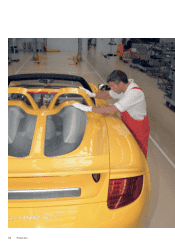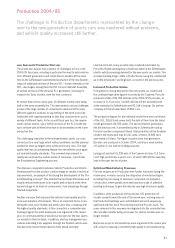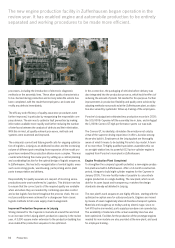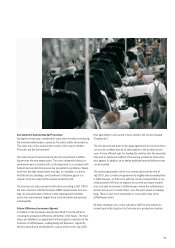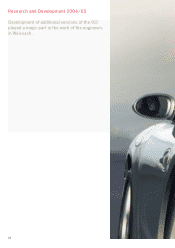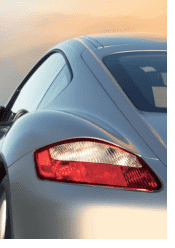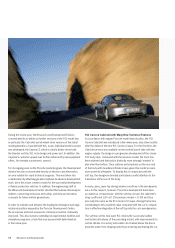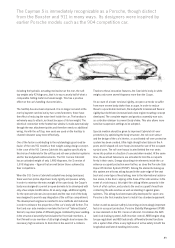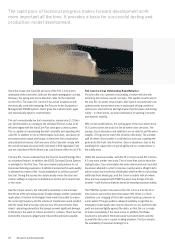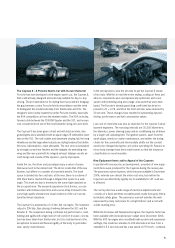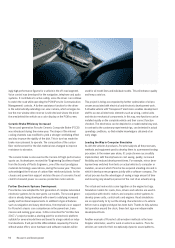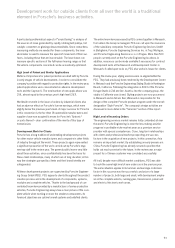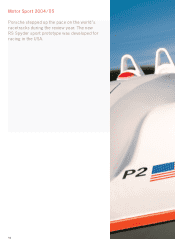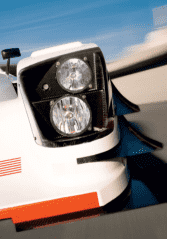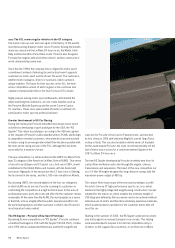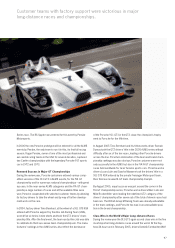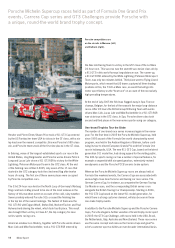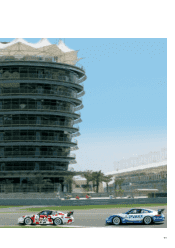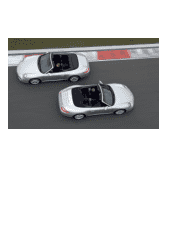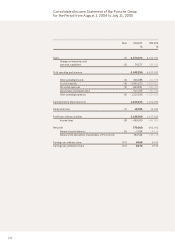Porsche 2004 Annual Report Download - page 96
Download and view the complete annual report
Please find page 96 of the 2004 Porsche annual report below. You can navigate through the pages in the report by either clicking on the pages listed below, or by using the keyword search tool below to find specific information within the annual report.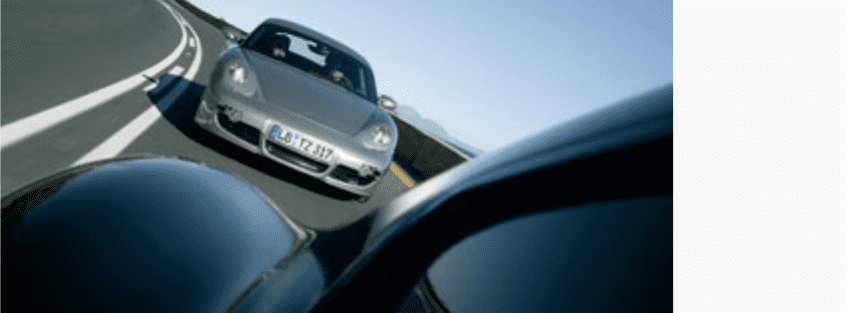
Research and Development92
ingly high performance figures for a vehicle in the off-road segment.
Voice control was developed for the navigation, telephone and audio
systems. It contributes to active safety, since the driver can continue
to watch the road while operating the PCM (Porsche Communication
Management) controls. A further assistance function for the driver
is the automatically extending rear-view camera, which emerges be-
low the rear window when reverse is selected and shows the driver
the area behind the vehicle as a color display on the PCM screen.
Ceramic Brake Efficiency Increased
The second-generation Porsche Ceramic Composite Brake (PCCB)
was introduced during the review year. The shape of the internal
cooling channels was modified to yield a stronger ventilating effect
and also improve the rigidity of the disk. This in turn has made the
brake more pleasant to operate. The composition of the carbon
fiber reinforcement for the disk material was changed to improve
resistance to abrasion.
The ceramic brake is also used on the Carrera GT high-performance
sports car. Its developers received the “Engineering Excellence Award”
from the Society of Plastic Engineers, one of the most prestigious
materials technology associations, during the review year. This prize
acknowledged the first use of carbon fiber reinforced plastic for the
chassis and powertrain support and also the use of a ceramic-faced
clutch to transmit power on a series-production motor vehicle.
Further Electronic Systems Development
Porsche has now adopted the first generation of complex networked
electronic systems for its new sports car models. The second gener-
ation is already being developed with a view to satisfying increased
quality and functional requirements. In addition to typical features
such as navigation and luxury electronics, the emphasis is on support
for Porsche’s classic core competences in the powertrain, trans-
mission and running gear areas. In this connection the “Architecture
2007+” project provides a starting point for an electronic platform
suitable for several model lines and based to a large extent on indus-
trial standards. It will permit the differentiation required by Porsche
without undue effort, since hardware and software modules will be
used for all model lines and individual models. This will enhance quality
and keep costs low.
This project is being accompanied by further optimization of all pro-
cesses associated with electrical and electronic development work.
A drivable vehicle with “transparent” electronics enables development
staff to access all electronic elements such as wiring, control units
and electro-mechanical components. In this way, new functions can be
installed rapidly on the complete vehicle and their correct function
checked. The electronics can be depicted in a model-neutral way and,
in contrast to the customary experimental rigs, can be tested in actual
operating conditions, so that reliable knowledge is obtained at an
early stage.
Leading the Way in Computer Simulation
As with the vehicles it produces, Porsche subjects all the processes,
methods and equipment used to develop them to a permanent testing
procedure. In the review year alone, 51 projects were successfully
implemented, with the emphasis on cost saving, quality, increased
flexibility and reduced development times. For example, mirror deve-
lopment was switched from tests on actual vehicles to computer si-
mulation, an area in which Porsche has acquired a leading role and in
which it develops new programs jointly with a software company. The
virtual process has the advantages of saving a large amount of time
and incurring only about ten percent of the cost of an actual test rig.
The virtual and real worlds come together on the engine test rigs.
Simulation models for roads, tires, drivers and vehicles are used in
conjunction with electric motors and complex control systems to
develop power units, control units and engines. Road simulations
are an opportunity to try out the driving characteristics of a vehicle
before even a single prototype has been built. Thanks to fully automa-
ted operation around the clock, these test rigs are indispensable
development tools.
Another example of Porsche’s ultra-modern methods is the laser
Doppler vibrometer, used for work on vehicle acoustics. Porsche
vehicles are noted for their exceptionally dynamic sound patterns.


